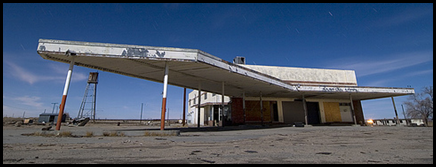Why invest in UX?
I often get asked the question around how one is able to return an investment on User Experience. It’s as if the person asking the question is somehow expecting some random piece of research data that outlines how one could grow their business by x% because of UX?
The reality is that you’re unlikely to get such an accurate answer as ultimately any answer you are given is somewhat flawed. I say this, as to derive at an answer around the ROI for UX is to assume that you had two solutions in the market today.
First being legacy, one that you have today in its AS-IS state and the second being the new improved user experience enhanced version. You then approach your potential customer and ask them to buy one or the other, depending on the purchase you then derive your answer.
The reality however, is this will never happen as most companies approach UX from a migration or virgin state. If it’s migration, you’re typically moving an existing user base from the old to the new, in which case you’re going to find yourself in a delicate balance of great user experience and uphill battles in habits requiring rehabilitation.
The wrath of Legacy.

An example comes to mind in my past, where we had a green screen reservation management system. It was used by hundreds of call centre employees and the purpose of the new improved version, was simply to increase efficiency in fiscal responsibilities whilst at the same time providing the said company an entry point into the eCommerce market.
It was an utter disaster, not only did the software introduce a mouse to the users workflow, it also reduced their productivity resulting in a massive budget blowout (which from memory caused the project to be abandoned and we all went back to the market for new bids).
Investing in UX is not just about replacing the old with the new, it doesn’t actually start at the technology level it goes right back to the business process or workflow level. You really need to dissect the before (AS-IS) and after (TO-BE) before you commit to change.
TO-BE vs. AS-IS
Change has impact, it’s never an easy pill to swallow and it always has enemies. The larger the company, the more disruption you will introduce and this is critical point to convey, as trust is going to be the one emotion you project. Trust doesn’t mean you focus in on the executive branch and assure them that the investment is worthwhile, trust occurs at the grass roots, where the folks you are about to impact the most feel empowered by your choice.
Failure to gather their trust will result in hostility towards your change, and whilst some would assume this as employees just being difficult it’s not the case at all. You’re being difficult, as you’ve just impacted their work life and you didn’t even bother to ask them first.
The way to garnish their trust while at the same time get an accurate picture of the problem is to simply map out their workflows or business process. It’s quite a liberating thing to monitor as once you understand how people have been adjusting to software, you’ll no doubt uncover where the breakdowns occur – meaning which points a user stops using the said software and seeks an alternative process in either another piece of software or worse, paper.
Once you understand this, you’ll identify more closely with their pain points and so when it comes to deciding on user experience, you are looking through their eyes and not what you preconceived as being both the problem and solution.
That ultimately is the heart of quality user experience. Connecting to your end user through software and establishing an emotion reward to areas in which they are feeling the most pain within.
Ok, this convinced me UX is a waste of time, why invest in it then?

My intent is not to scare you away from UX; it’s more to the point drawing your attention to the parts of the brochure you won’t read. User Experience is not a once off deal; it’s a start to much longer conversation with your targeted users.
The investment in User Experience is simply this, you now get to measure and listen more intently to your current user base, only this time your goal is to ensure they are getting more efficient in their tasks and spend less time inventing workarounds to bad functionality or worse, form.
Your actual investment in user experience starts the day you accept the fact you’re first release to your old and new audience is a rough draft. I say this, as your journey has just begun and you need to now listen intently to what your targeted end users are going to do next.
Using the latest revisions of our UX Platform provides you more features and abilities to measure how users interact with your solutions. You want to listen to them, as they will tell you everything you need to know and more by not only their actions but also their direct feedback.
Measure once, cut twice.

As you build out your new improved user experience, think about how you’re going to measure their experiences and what areas are of great concern. Focus groups and beta testing will only do so much, it’s after long periods of time that you’ll eventually uncover where the death points occur.
Death points? You ask?

In TeamFortress 2 Valve Software measure where people die the most on any given map. Based off this data, they are then able to ascertain where areas of concern may arise. In tracking this data, it then provides them with enough data to decide on how they can next impact the said map to improve future gaming experience. As maybe increasing a bridge by 2inches will reduce the poor experience or maybe introducing a barrel near a door way will give enough cover fire and so on. Death points.
It’s no different with software and process, as in the end you’re looking to decrease the poor experience of an end user so that they can carry out their given tasks with efficiency and ease.
Measure where death points occur and then look at ways to implement two possible solutions to the problem. Access the end users whom triggered these death points and play a trick on them, give half solution A and the other half solution B. Focus on the overlap, and not on what you perceive as the perfect solution to the said problem.
UX != Forms.

All too often, I’ve seen customers show me their form based solutions and I simply groan, as all I see is a sea of fields being presented to the end user. I often ask, is it absolutely necessary that the end user fill out every field? The typical response is “oh yes, it’s critical!”.
This is where progressive disclosure techniques often play a role, but I often can’t but help wonder if the data is really that critical. As surely there’s a process going wrong in the system outside the software that needs fixing? In which case is software rewarding this bad behavior or solving it?
The only way to answer this is to start measuring what roles/personas are accessing this critical form and ascertain what fields are being frequently used the most. Then look to establish better display techniques to ensure that the most important fields get visibility upfront, whilst the less important are used in a fashion that adheres to whatever exit criteria you set in place.
Overall though, you may find that those critical fields suddenly aren’t that critical and it’s highly likely that based on the roles they fluctuate per persona – or maybe the company in question continues to reward a broken business process by impacting all users with large forms to fill out.
One-stop shop that fits all.

Having large forms on a screen per role is somewhat questionable and this kind of fits into the progressive disclosure bucket as all too often I also see software being built for the entire company to use and less per user role.
It fascinates me as with WPF or Silverlight you have the ability to dynamically display UI in a manner that befits the role at the terminal and less about covering all roles off at once. As once you can start to provide contextual meaning to the end user, they in turn will receive a focused user experience and here’s the best part, the owners of the software start to see areas in which efficiency could be improved with the said roles.
It’s really about give and take, and working with the personas/roles for given software both before and after is critical to a return of investment in user experience. As now, you have data to support the “why” meaning, why was adjusting user experience worth the effort?
Summary
Like I said, your end user has a lot to say, you just need to listen and in return you’ll get information on how to not only improve broken processes but also improve the quality of life for that said end user. This is the reality of your return of investment, as it actually is data you can’t buy!
If you already have the answers to the above, then well you aren’t asking why invest in UX but now why keep investing in UX?
User Experience isn’t simply about better UI; it’s about encouraging an easy, natural and engaging interaction between user and system. It just so happens to look amazing at the same time.
